Less water doesn’t mean a boring garden. Here are 5 tips for a beautiful, dry climate garden that saves water.

Less water doesn’t mean a boring garden. Here are 5 tips for a beautiful, dry climate garden that saves water.

Have you ever wondered how your plants fare in the scorching heat of summer? Is your garden equipped to withstand the punishing temperatures that a heatwave can bring, whether you reside in the arid desert Southwest or more temperate regions? In this guide, we’ll explore how to create a heatproof garden that thrives even during the hottest days of summer.
What do your plants look like in the middle of summer? Do they thrive despite the hot temperatures?
Or do they look more like this?
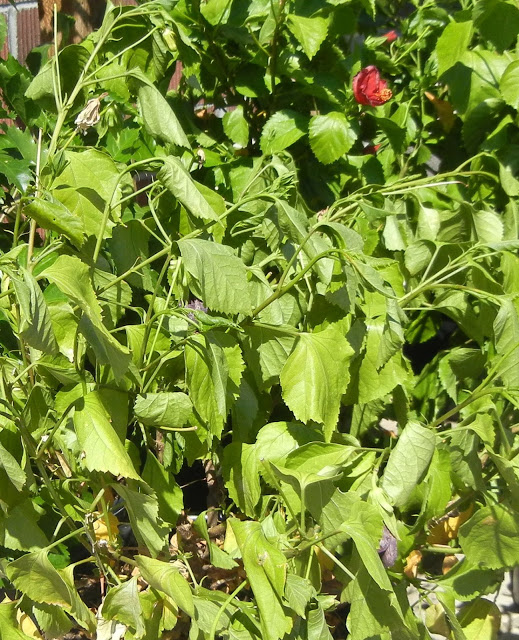
Before we dive into our tips for heatproofing your garden, it’s crucial to understand how to recognize the signs of heat stress in your plants. During the hottest part of the day, take a stroll through your garden and keep an eye out for wilting leaves, as well as leaves turning yellow or brown – all telltale signs of heat stress.
Here are five essential strategies to help your garden not only survive but thrive in the face of scorching summer temperatures:
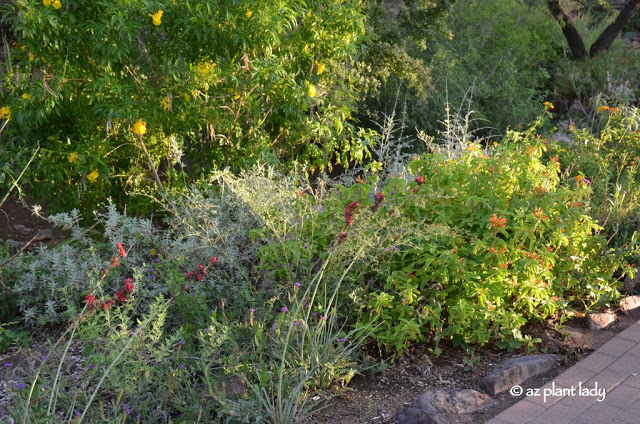
Selecting native or climate-adapted plants is a foundational step in creating an attractive, low-maintenance landscape that remains beautiful year-round. These plants possess unique characteristics that enable them to withstand local climate conditions, including extreme summer heat. Learn how plants like Langman’s Sage and Mexican Honeysuckle adapt to thrive in the heat.
All too often, we find ourselves with landscapes filled with plants. These plants often have large leaves and struggle to survive the hot, summer months. This results in unattractive plants that we work hard to help sustain them until cooler temperatures arrive. Usually, these plants are best meant to grow in climates with less extreme heat.
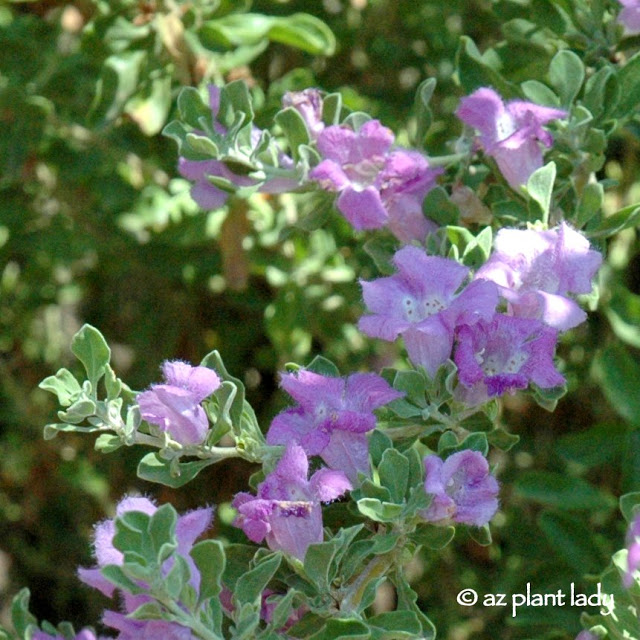
Langman’s Sage (Leucophyllum langmaniae)
Let’s look at an example of an adaptation that this Langman’s sage. The adaptation enables it to handle full sun and 110+ temperatures without undue stress.
Notice that the flowers have small hairs. So do the leaves, giving them a slightly grayish cast. These tiny hairs help to reflect the sun’s rays, which lowers the temperature of the leaves and flowers.
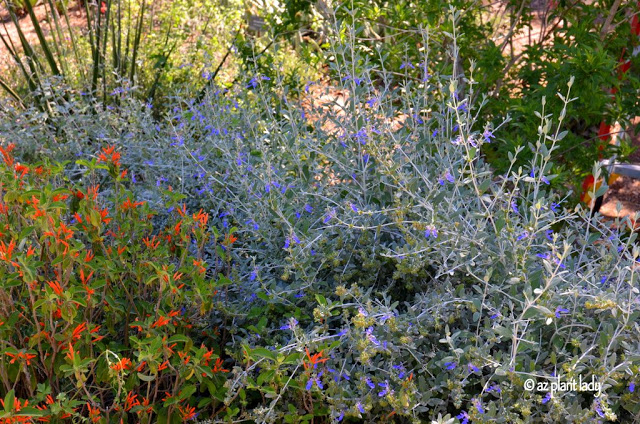
Mexican Honeysuckle (Justicia spicigera) and Shrubby Germander ‘Azurea’ (Teucrium fruticans ‘Azurea’)
Another way that plants have to handle the heat is by having small leaves. This limits the amount of water lost, which helps them to deal with hot, dry temperatures.
Here in the desert Southwest, there are many native plants that are used. There are also plants from Australia and other arid regions, which have similar climates.
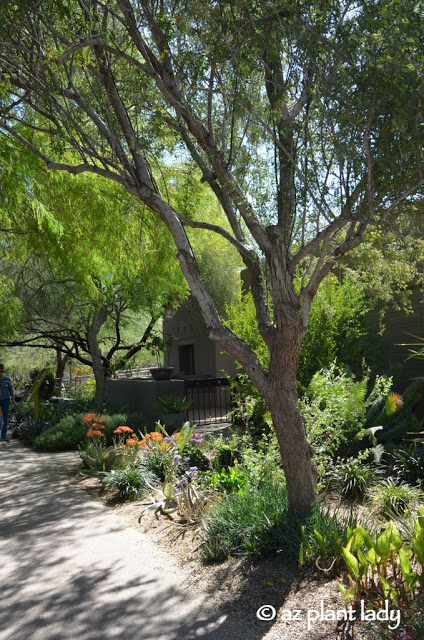
Introducing shade into your garden offers respite from the relentless sun, benefiting both plants and your home’s overall cooling. Discover how to provide just the right amount of shade by strategically planting trees that offer filtered shade. This allows enough sunlight for other plants to flourish.
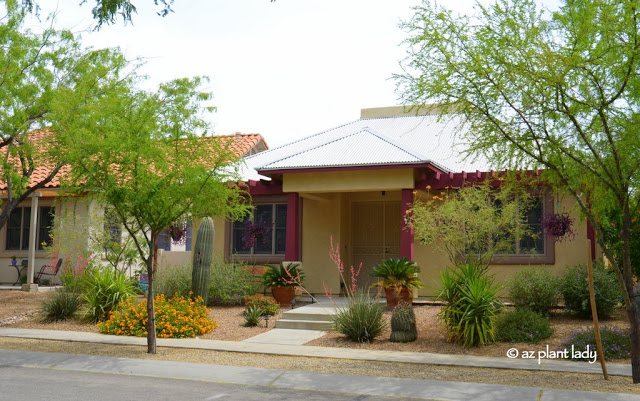
Plants need water to survive, and not surprisingly, they need the most in the summer. However, we often water them too often and shallowly for it to do much good.
Shallow watering keeps roots close to the surface of the soil. There the soil temperatures are hot and the water dries up quickly.
Water is essential for your plants, especially during summer, but not all watering methods are created equal. Learn why deep watering, encouraging deep root growth, is far more effective than shallow watering. Discover how to gauge the depth of your watering and why early morning is the best time to hydrate your plants.
“Plants that are watered deeply and infrequently are better able to withstand the heat.”
Shrubs should be watered to a depth of 2 feet and perennials and groundcovers to 18 inches. You can determine how deeply you are watering by inserting a piece of rebar down into the soil (right after you have finished watering) to see how long you need to irrigate. On average, 2 hours is the length of time to irrigate to the desired depth.
In my online class, Desert Gardening 101, I teach my students that watering deeply is as important as the time of day that you water. The best time to water is early in the morning. Watering plants in the afternoon is not as useful since plants allocate their resources at that time toward surviving the stresses of the heat and so they do not take up water as efficiently.
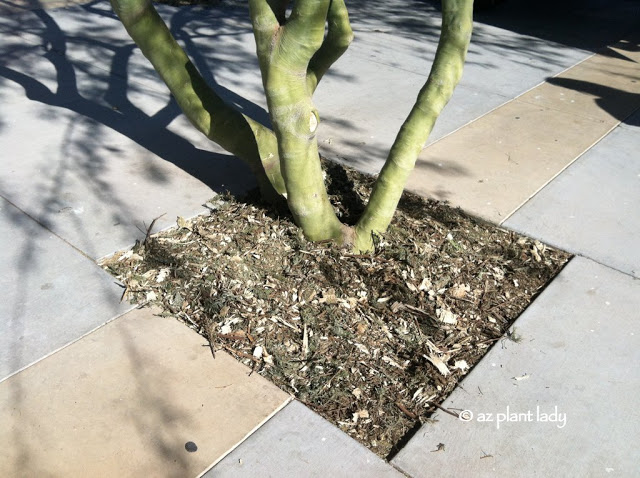
Mulch plays a crucial role in heatproofing your garden. It helps regulate soil temperatures, keeping them cooler during the summer while conserving moisture – essential for plant health. Explore unconventional mulch options, including fallen leaves, pine needles, and even fallen flowers, and learn how they can enhance your garden’s well-being.
A bonus is that they also help to prevent weeds from taking root.
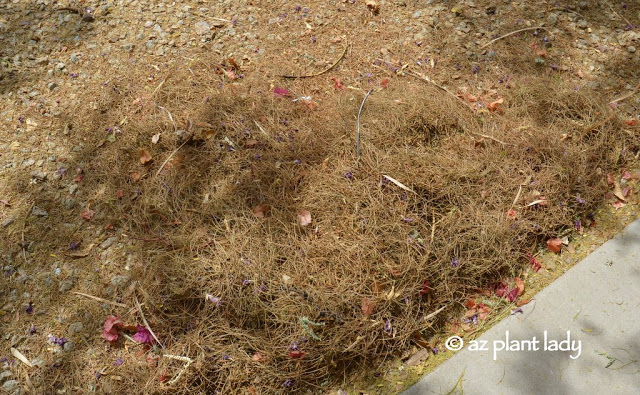
Let’s take a minute to rethink our definition of what makes an excellent mulch.
While shredded bark and wood chips may come to mind, did you know that fallen leaves, pine needles, and even fallen flowers can also serve as a mulch? That is how nature does it.
So, the next time you are tempted to whip out your leaf blower, how about directing it toward the base of your plants where the leaves and flowers can serve as a mulch?
They will also help to improve the soil around your plants as they decay.
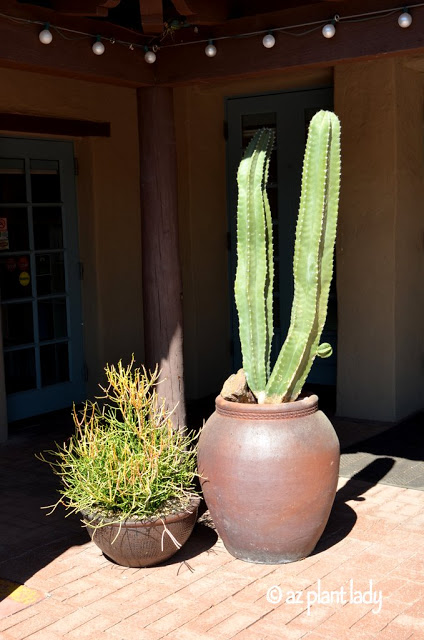
Tip for Heatproof Garden
While growing pretty flowers in containers is relatively simple in fall, winter and spring-summer can be another matter entirely. Often, it can be hard to grow flowering annuals in pots throughout the hot summer.
The reason for this is that the soil around the roots of container plants is hotter than if grown in the ground.
This is especially true for the outer 6 inches of soil which heats up in response to air temperatures and the hot container. As a result, annuals can wilt and struggle to produce flowers in summer.
Succulents are a great way to enjoy attractive container plantings throughout the year, not just in summer. Their ability to store water is what makes them an excellent choice for containers.
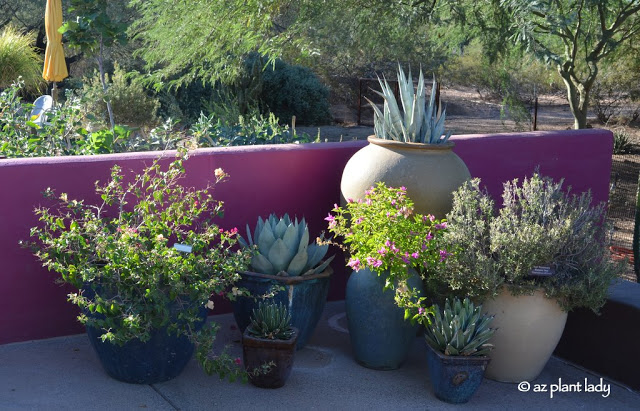
Tip for Heatproof Garden
If you want to grow something else besides succulents, how about trying heat-tolerant shrubs? Bougainvillea does great in pots as does lantana.
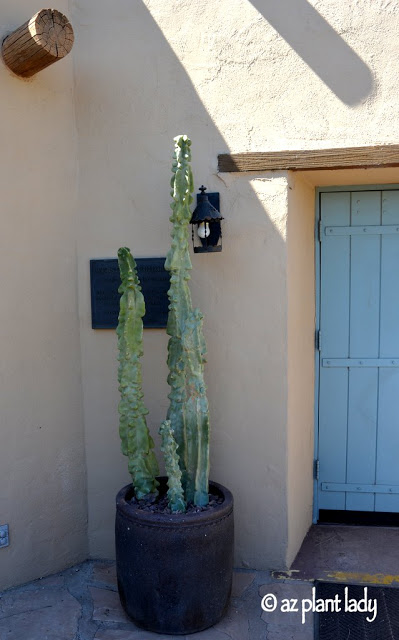
Tip for Heatproof Garden
Another tip for containers is to leave them empty in the summer months and wait until fall to plant them.
When thinking in terms of growing plants in containers in hot climates, bigger is better – at least 2 feet wide at the top. The larger the pot, the more soil and therefore, more insulation for the roots from the hot outer zone.
So what can you do if you do have plants that are struggling in the heat – particularly during a heatwave?
Other than replacing them, you can provide them with temporary shade such as a patio chair strategically placed so that it protects it against the afternoon sun. A light spraying of water over the plant and surrounding area in the evening can help reduce the temperature – don’t do this when the sun is out, or you may burn the foliage.
How to Help Your Plants Survive a Heatwave

When trying to decide what to fill our containers with, most people gravitate toward colorful, flowering annuals. For those of us who live in the Southwest, we are equally likely to fill our pots with cacti or succulents, which thrive in our dry climate.
However, did you know that plants aren’t the only thing that looks great in containers? In fact, what many people would consider ‘trash’ can actually transform the look of a container and your outdoor space.
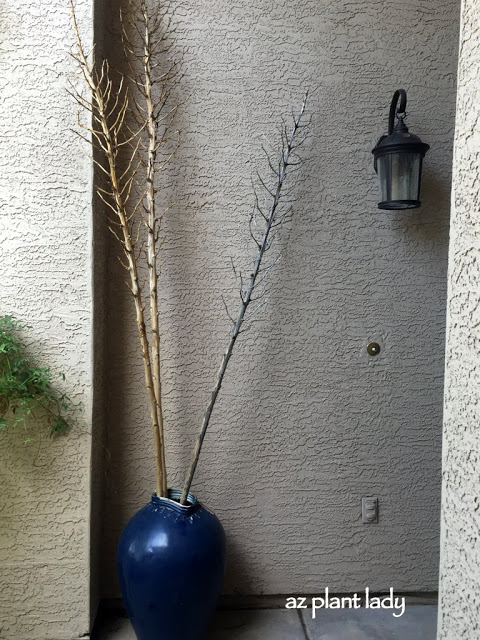
Dried plant material can add a unique and striking look to the landscape when showcased in a pot.
Besides decorating your outdoor space, they aren’t particular about sun, shade and are perfectly happy without any water or fertilizer.
In this particular case, I had a lovely blue container in my front entry that had stood empty for longer than I would care to admit to. The opening was too small for most plants and it sat in the shade for most of the day making it difficult to grow colorful annuals.
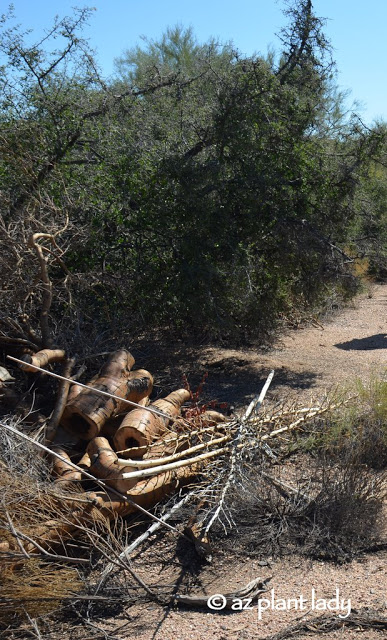
On a recent visit to a client whose home was surrounded by the natural desert, I found some dried plant material that would soon find its way to my house.
Among a pile of yard debris mixed in with cut tree branches and branch clippings were several dried yucca flowering stalks that had been pruned away and were waiting to be put in the trash.
Now most people would probably walk right by this pile of discarded plant material and understandably so. But, I was on the lookout for items that the homeowner could use for a walled in patio, which was quite bare and received hot, reflected sun for most of the day.
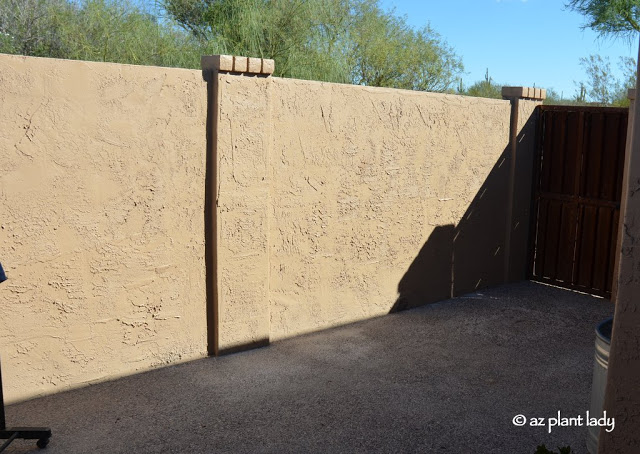
My thought was to add colorful, glazed containers in order to bring welcome color to this space and fill them with cacti.
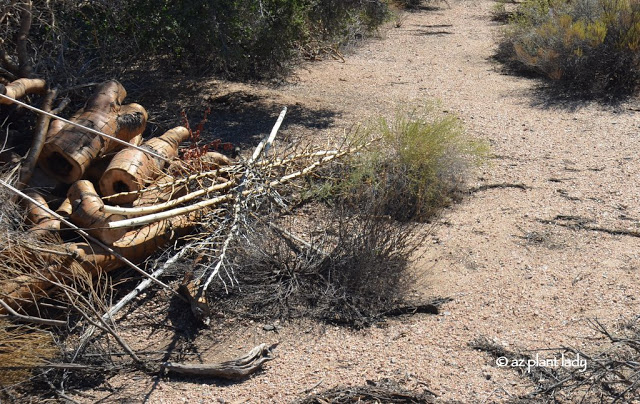
However, once I saw the dried yucca stalks, I decided that they would make a striking filler for a container.
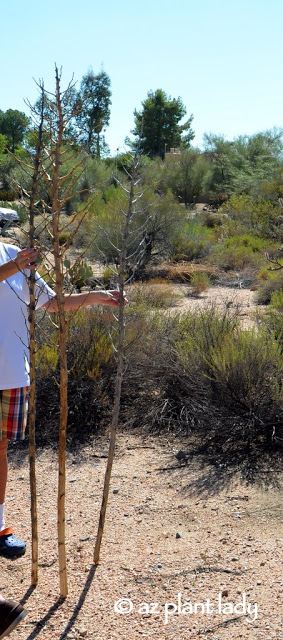
The homeowner, who enjoys designing the interior of her home, saw the potential right away and selected three stalks.
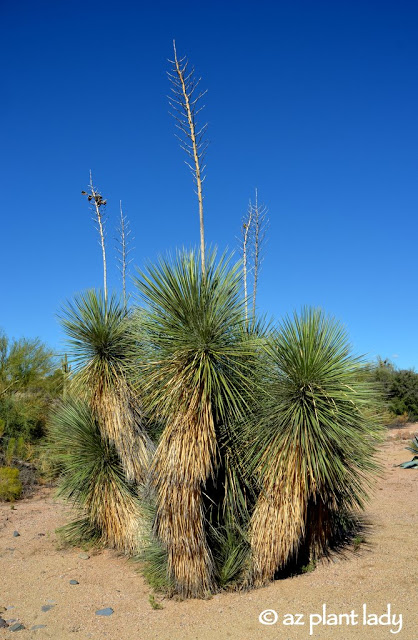
The flowering stalks came from a magnificent soaptree yucca (Yucca elata) that they had growing in their front yard.
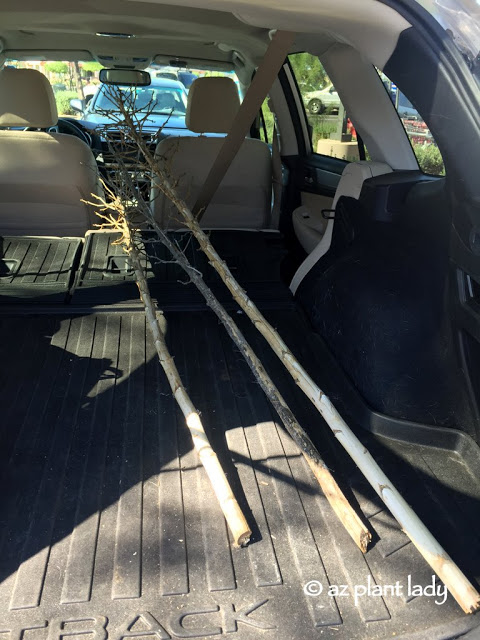
The homeowners graciously offered to give me a few of the stalks to take home.
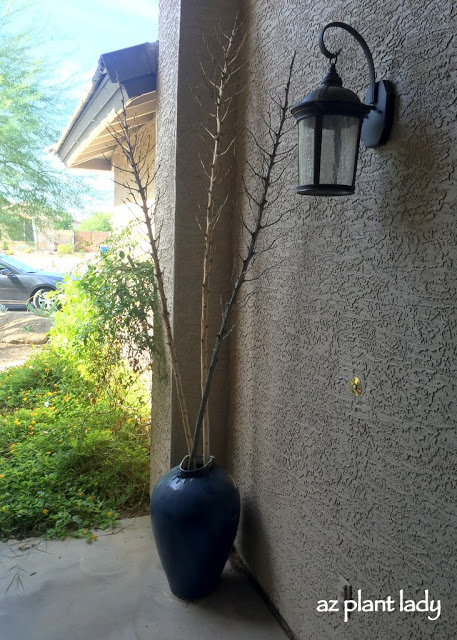
I knew that my empty blue container would make the perfect home for dried yucca stalks.
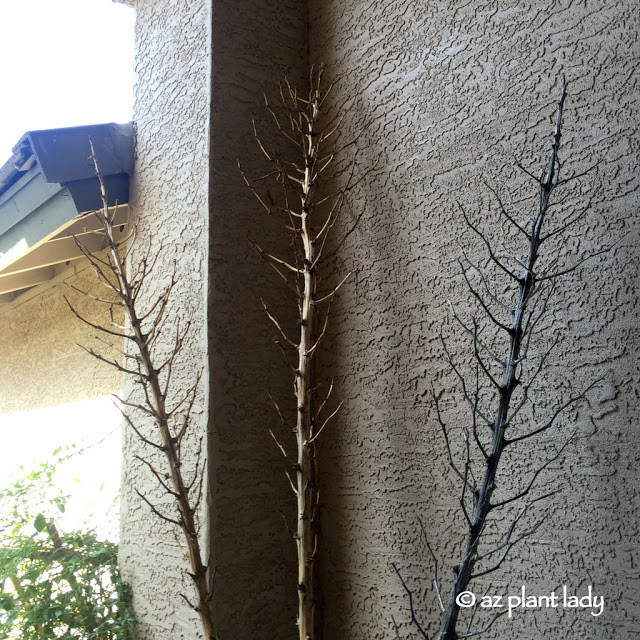
While I love my new dried yucca stalks – they are just a few natural items that can be used in containers.
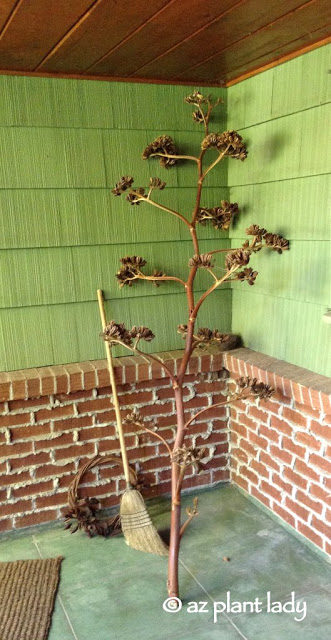
This large, dried flowering stalk from an agave would look fabulous in a container and displayed in the corner of an entry or patio.
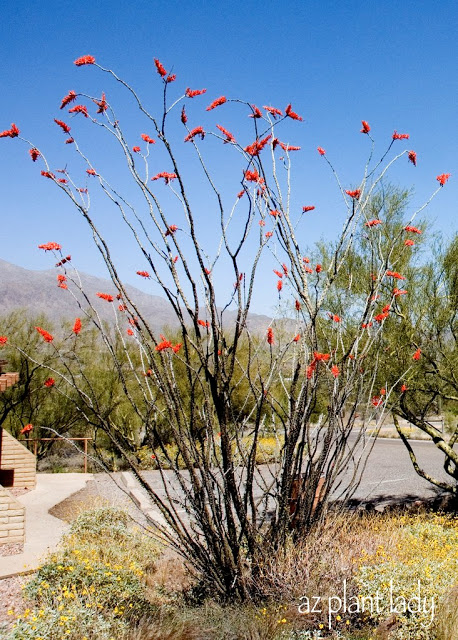
Discarded canes from an ocotillo that would otherwise be headed toward the landfill can find new purpose as a filler for containers.
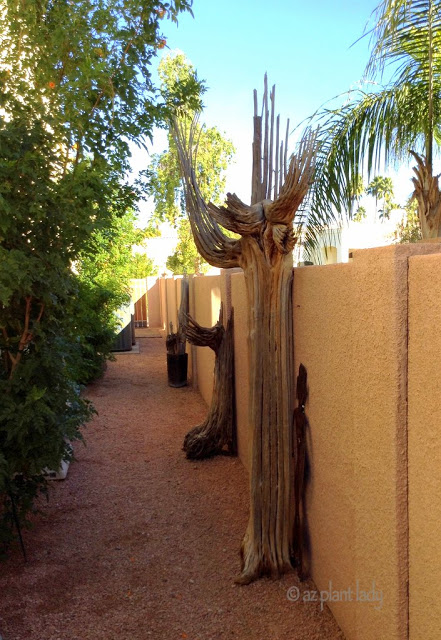
A saguaro skeleton would make a dramatic statement if ‘planted’ in a large container.
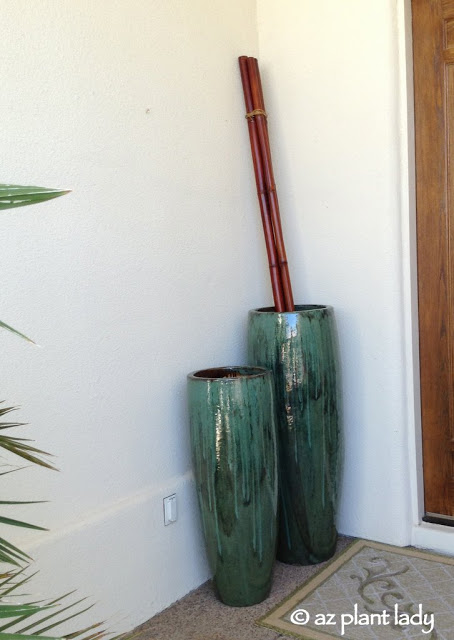
On my recommendation, this client gave up trying to grow flowering annuals in her shady entry and add colorful containers with bamboo poles.
Do you have a location where you’d like to have containers, but whatever you plant there dies?
Do any of the following situations where you’d like to have containers apply to you?
– Too much shade or sun
– Access to irrigation is limited
– You are gone for long lengths of time and can’t care for container plants
– Worried about staining the concrete or tile underneath the container from mineral buildup from watering
– You tend to kill anything you plant
If you are dealing with one or more of these situations you may want to look at adding dried plant material to your containers for a unique and fuss-free look that will add beauty to your outdoor space.
It’s All About the Leaves: Creative Container Plantings

June is here, which marks the official beginning of hot, dry weather throughout the southwest.
While most of us can be found indoors in the comfort of air-conditioning – your plants can be suffering from the heat and intense sunlight.
May and June can be some of the most difficult months for plants in the garden until the summer rains arrive in late June.
Need some helpful tips for your June garden?
Here is my June “to-do” list that I wrote for Houzz.com.

I hope you enjoyed the grand tour of my edible garden that I created in my side yard.
Today, I would like to show what is happening in my original vegetable garden…
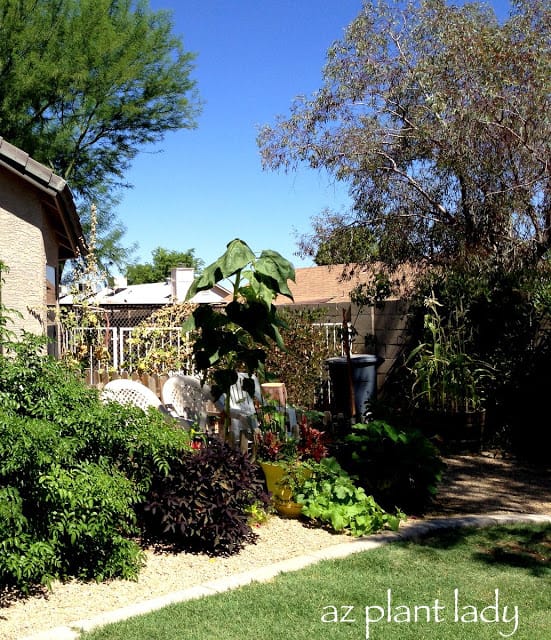
As you can see, there is a lot growing in this area.
Among the vegetables is a giant sunflower, pots filled with ornamental plants AND vegetables and hollyhocks that have finished flowering can be seen alongside the garden.
Off to the right side, you can see my container corn.
And yes, those are plastic patio chairs inside my vegetable garden. (I’ll explain why later.)
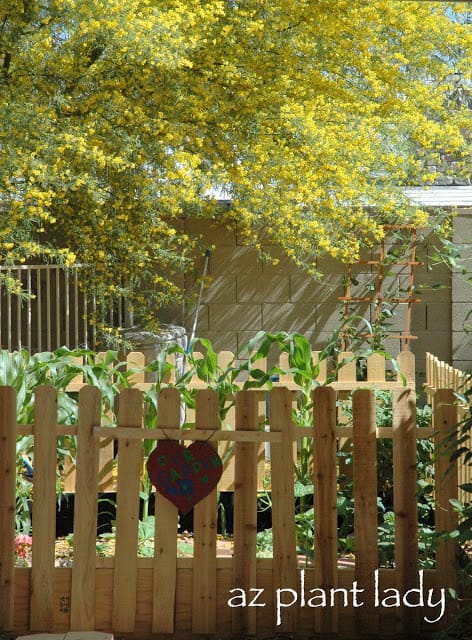
This edible garden is actually made up of three parts. My original vegetable garden was a fenced in square space. Like many gardeners who like to grow their own food, I realized that I needed more space – so we added on an extension a couple of years ago…
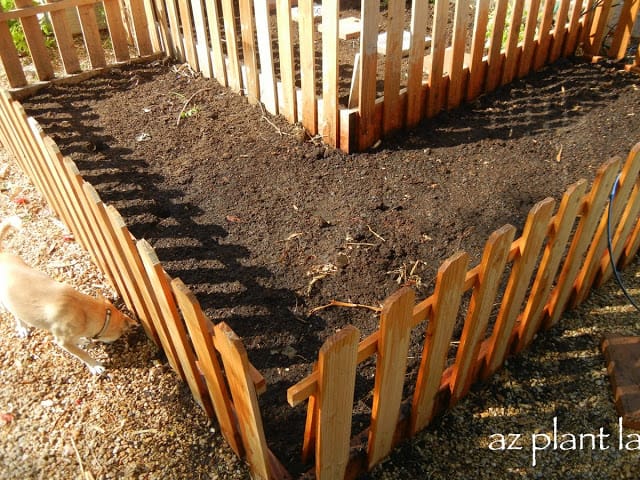
The third part of my edible garden consists of vegetables growing in containers along with ornamental plants…

I currently have zucchini growing in the closest pot along with a jalapeño plant, parsley and sweet potato vines.
The middle pot is filled with a Thai pepper plant, chives, cucumber, celosia and kangaroo paw.
The third (and my most favorite container) has a bell pepper plant, cinnamon basil, green & purple sweet potato vines, dianthus and angelita daisy growing inside.

The outer vegetable garden is filled with sunflowers and bush beans.
Our family loves to eat ‘string beans’. They are easy to grow and to freeze for later.
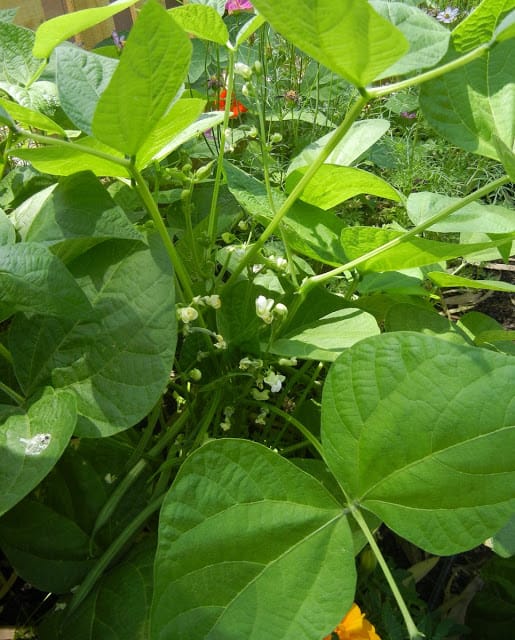
Here is something that you may not know about growing beans. “They make their own nitrogen, so you don’t need to add any nitrogen fertilizer.”
In fact, if fertilize them with a fertilizer that contains nitrogen – it can cause them to grow beautiful leaves, but not beans. That is because there needs to be a balance between the other major nutrients – phosphorus and potassium.
If you do apply a fertilizer, make sure that contains a low amount of nitrogen.

I have lots of cucumbers growing in the original vegetable garden along with a couple of pumpkin plants.
As a child, I grew up calling cucumbers ‘gurkens’, which is what they are called in German. I spent some time when I was young, in Germany, visiting my grandparents while my grandfather was working over there.
I love cucumbers and we eat them 3 or 4 times a week.

It can be a little hard to spot ripe cucumbers. Most of my cucumber plants are growing up onto the trellis, but sometimes you can find cucumbers growing on the ground. You need to move the leaves aside to see them.
I like to eat cucumbers with salad, using my grandmother’s ‘top secret’ salad dressing recipe.
I only wish that I could grow cucumbers and leaf lettuce at the same time….
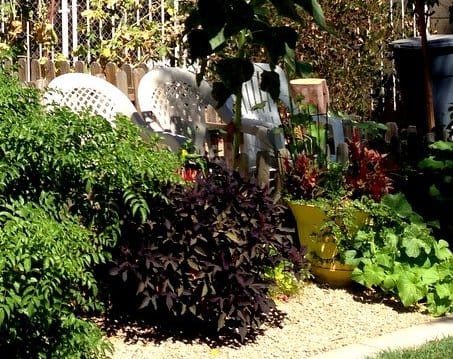
Okay, back to the patio chairs sitting in my garden.
Why on earth would I place chairs in my garden?
Well, they are an easy way to provide shade for vegetables that quickly wilt in the full sun.
And so, that is what is going on in my edible gardens this summer.
**I am excited to share with you a gardening video that I made for Troybilt as a part of my involvement with the ‘Saturday 6″.
I’ll debut it for you on Monday 🙂

It may be awfully hot outside, but my garden is awash in brightly colored flowers from my single bougainvillea, Arizona yellow bells and ‘Rio Bravo’ sage, which shrug off the summer heat.

Last year, we decided to create an edible garden along the side of our house.
This was a large underused area that we look out at from our kitchen, family room and bedrooms.
To get it ready for planting, we had our ghost gum eucalyptus tree removed. It was a beautiful tree, but was quickly outgrowing this area with its overhanging limbs.
The next step involved pulling out some of the flowering shrubs along the back wall and along the side of the house. We kept the flowering shrubs along the side wall, because they add beauty and help to break up the bare expanse of the wall.
This is what the side garden looks like today…

The centerpiece of the edible garden is the vegetable garden. Right now, it is filled with corn, zucchini, tomatoes, cucumbers and sunflowers.
In front, is my colorful container filled with a variety of herbs including basil, parsley, sage and thyme. I bought an inexpensive plastic container and spray painted it a bright blue. The container is connected to the drip system of the vegetable garden.

In the foreground (not pictured) is our new Arizona sweet orange tree. We planted it last year and are excited to have three oranges growing on it.
You may be thinking that three oranges is not much to be excited about, but the first couple of years after a citrus tree is planted – you are lucky to get any fruit at all.
Newly planted citrus trees shouldn’t be fertilized during the first year, because you want them to focus on root growth, not upper growth when there is not a substantial root system for them to rely on. Since it has been a year since we have planted it, we will fertilize this year.

In front of the vegetable garden are a pair of new peach trees.
I love peaches and have enjoyed the fruit from my mother’s peach trees for years. I finally decided that I wanted to grow my own.
We got 18 peaches this year, which is a lot considering that we planted them in January.
Notice the green plant at the base of the peach tree? It is a gourd plant that will quickly grow and cover the ground. This will serve as a ‘living mulch’ and help to prevent weeds and shade the roots of my peach trees.

Inside the vegetable garden, sunflower seeds are beginning to form. It is so fun to see the birds hanging upside down trying to get to the seeds.
You can allow the birds to eat the seeds or if you want to save them for yourself, simply tie a paper bag around the flower to keep the birds away.
I’ll probably save some flowers for ourselves and let the birds enjoy the seeds of a couple of unprotected sunflowers.

A large zucchini plant is growing in the background and as anyone who has grown zucchini will tell you, it is prolific.
The slightly wilting plant in the foreground is a pumpkin plant. If you want a pumpkin for fall, then June is when you want to plant them.
It is normal for the leaves to wilt slightly during the heat of the day. They will return to normal later in the day.

Zucchini can hide underneath the large leaves of the zucchini plant. I’m going to use this one to make my chocolate chip zucchini bread. It’s delicious and your kids will never know there is zucchini in it 😉
I found the recipe on Pinterest and have already made it once. My family keeps bugging me to make more. Here is the link to the recipe, if you are interested – Chocolate Zucchini Bread

My tomatoes are flourishing in the natural shade provided by my sunflowers.

One of my cherry tomato plants has even decided to expand a bit outside of the garden.

Behind the vegetable garden are my two apple trees, planted this January. One is a Anna apple tree and the other is a Dorsett Golden. These apple trees do well in the desert and although they will produce apples if planted alone – they will produce more apples because they will cross pollinate each other.
It will take a few years for any apples to appear, but the blossoms in spring are just lovely.

Behind the apple trees are six blackberry bushes. This year, we enjoyed the berries so much and are hoping for even more next year as they grow larger.
Blackberries won’t produce the first year after planting because the berries appear on 1-year odd canes.
Did you know that there are now thornless varieties of blackberries available? I have one….I only wish that the other five were thornless 😉
Well, that is what I have growing in my side edible garden.
Tomorrow, I’ll share what is growing in my original vegetable garden.
What do you have growing in your garden right now?
A Summer Edible Garden: Part 2

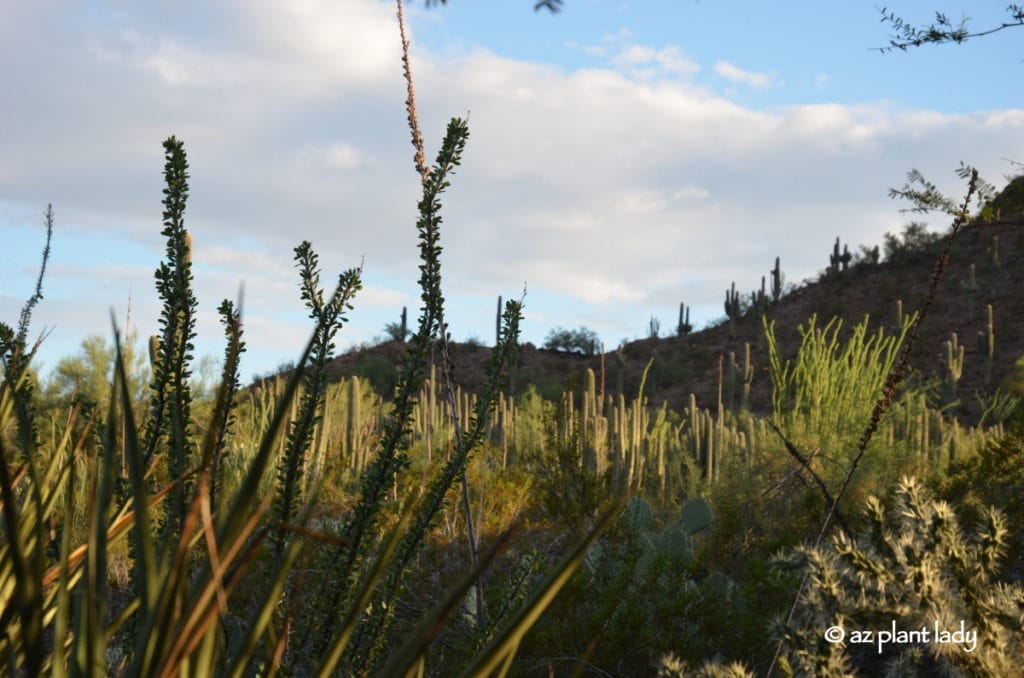
What comes to mind when you think of cactus?
Perhaps the first thing you think of is the spines. If you have ever been unfortunate enough to have been pricked by a cactus, you’ll likely never forget that most of them have needles.
*Did I ever tell you about the time I worked on golf course landscape and backed into a teddy bear cholla and got an entire piece lodged in the back of my leg?
Besides being painful to those who get too near to cacti, did you know that there are important reasons that cacti have spines?
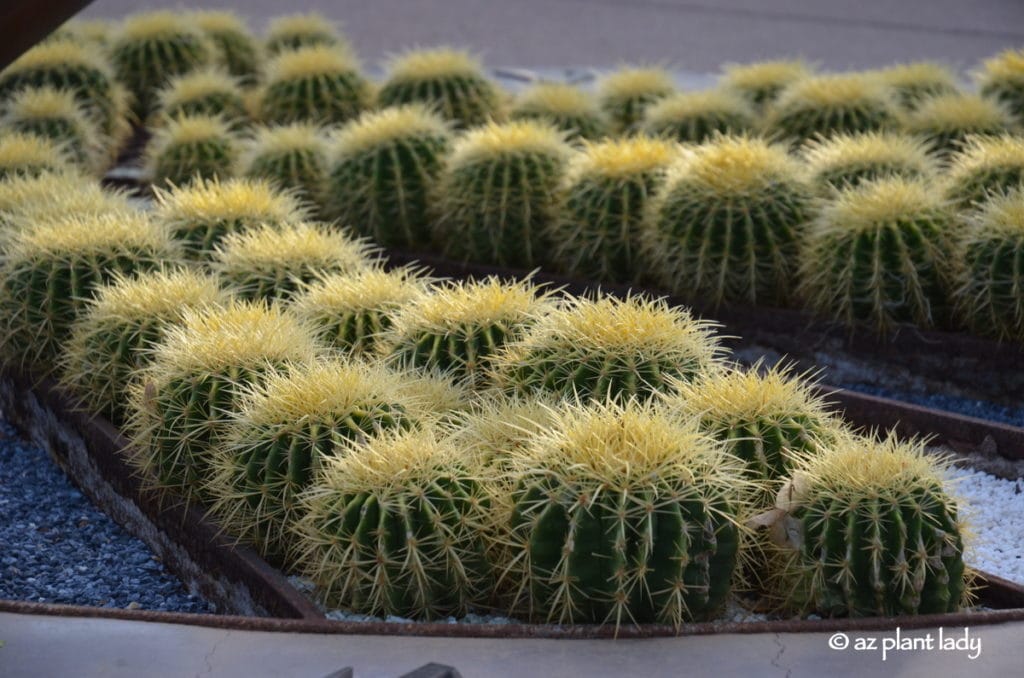
Golden barrel cactuses (Echinocactus grusonii)
First, let’s look at the spines of cactus for what they are – the main part of cactus often functions as a modified stem, and its needles are the leaves.
The most obvious function of cactus spines is to protect the cacti from animals and people. There are, however, a few animals who aren’t deterred by the sharp spines of cacti such as javelina, tortoises and pack rats.
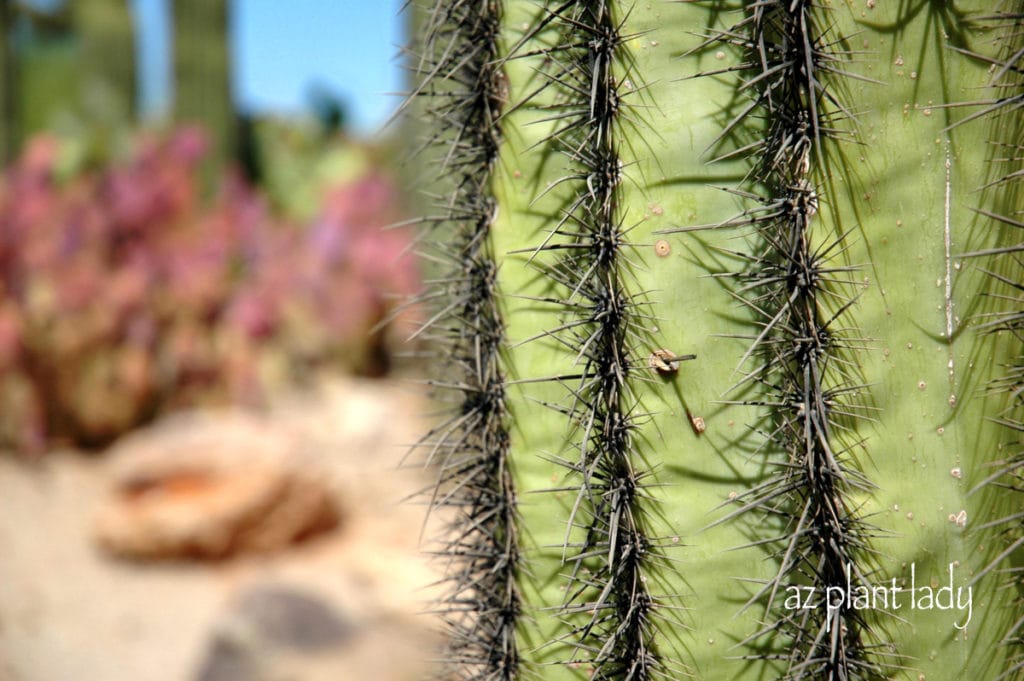
Saguaro cactus (Carnegiea gigantea) spines
Suprise, the primary function of the spines are to actually shade the cactus.
Although just one small spine would hardly provide shade, thousands of them can provide enough.
Why is sun protection needed for the surface of cacti? The shade from the spines let the cactus lose water through the atmosphere. This helps keep the cactus temperature relatively low.
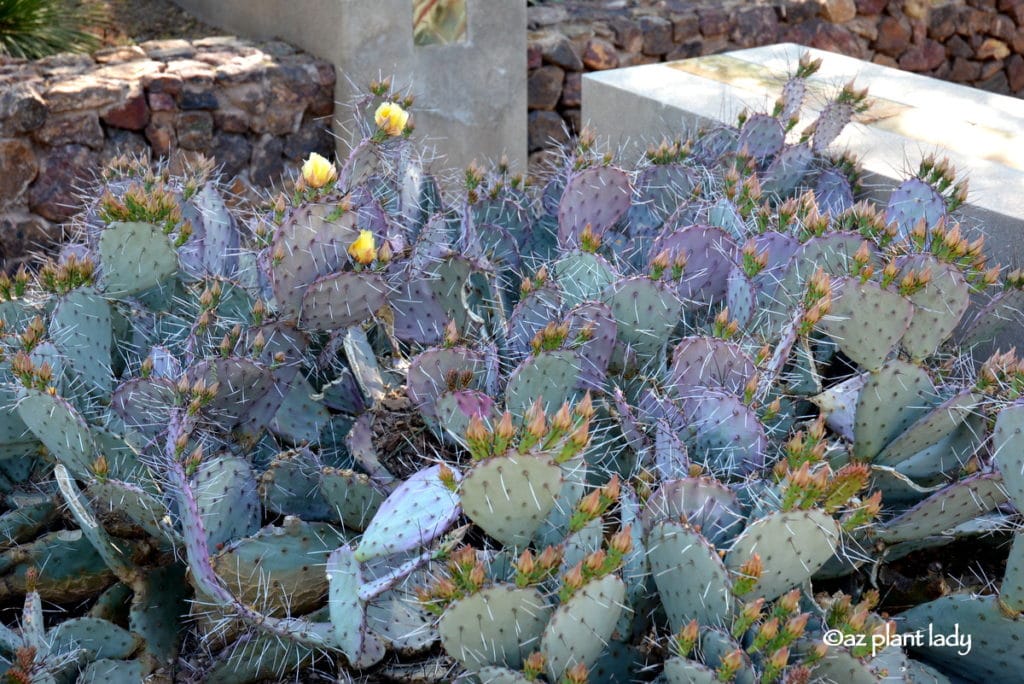
Black-spine prickly pear (Opuntia macrocentra)
Another function that the spines serve is that they help certain species of cacti such as cholla to root and spread.
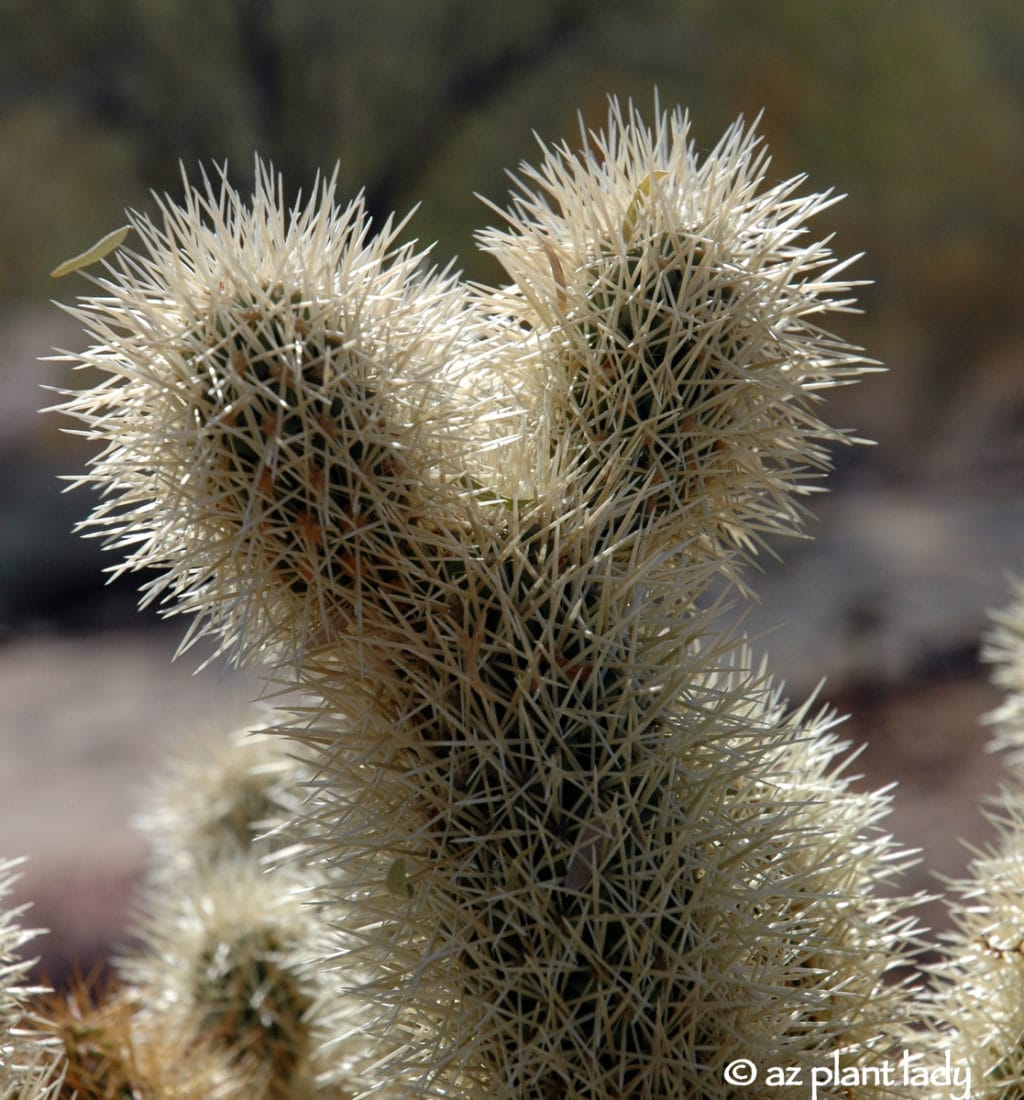
Teddy bear cholla (Opuntia bigelovii)
Spines of the Cholla are specialized to detach and attach onto anything that comes to close. There are tiny barbs at the tips which grab on to anything that gets too close. It almost appears as if they ‘jump’ off of the main cactus as they latch on the unlucky recipient.
Spines of the Cholla are specialized to detach and attach onto anything that comes to close. There are tiny barbs at the tips which grab on to anything that gets too close. It almost appears as if they ‘jump’ off of the main cactus as they latch on the unlucky recipient.
**If like me, you are ever unlucky enough to find a piece of cholla embedded in your clothes or worse, your skin – you can use a comb to help pull out the barbs. When hiking in the desert, it is easy to get them stuck on your shoes. I usually grab a rock and use it to push off the Cholla segment. When all else fails, a good pair of needle-nose pliers works.
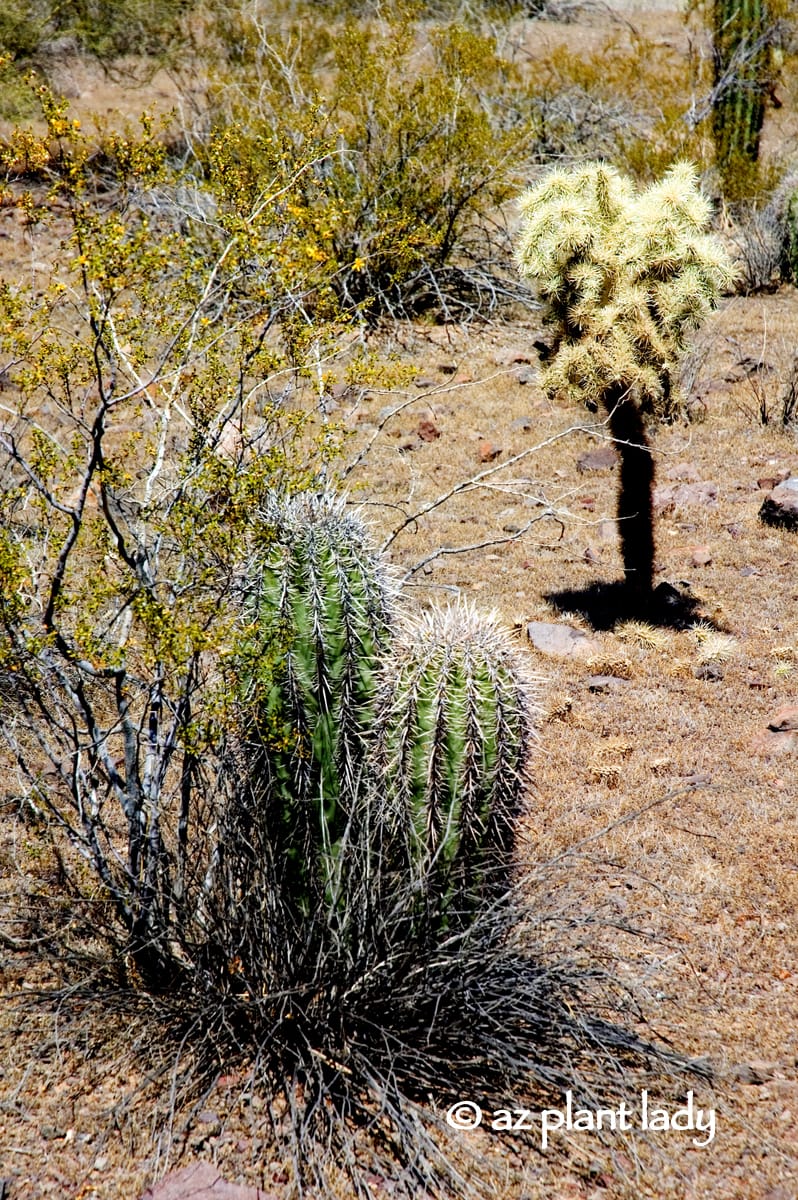
Two young saguaro cactuses are emerging from the shelter of a creosote shrub.
Hopefully, you have a new appreciation for cacti and their spines. But, it’s still important to be careful because it hurts when you get pricked!
What Plant Where? Beautiful Plant Combinations

I promise not to sell or share your email with anyone ever!
*Please note that I cannot answer individual gardening questions.
*As an Amazon Associate I earn from qualifying purchases.
| Cookie | Duration | Description |
|---|---|---|
| cookielawinfo-checkbox-analytics | 11 months | This cookie is set by GDPR Cookie Consent plugin. The cookie is used to store the user consent for the cookies in the category "Analytics". |
| cookielawinfo-checkbox-functional | 11 months | The cookie is set by GDPR cookie consent to record the user consent for the cookies in the category "Functional". |
| cookielawinfo-checkbox-necessary | 11 months | This cookie is set by GDPR Cookie Consent plugin. The cookies is used to store the user consent for the cookies in the category "Necessary". |
| cookielawinfo-checkbox-others | 11 months | This cookie is set by GDPR Cookie Consent plugin. The cookie is used to store the user consent for the cookies in the category "Other. |
| cookielawinfo-checkbox-performance | 11 months | This cookie is set by GDPR Cookie Consent plugin. The cookie is used to store the user consent for the cookies in the category "Performance". |
| viewed_cookie_policy | 11 months | The cookie is set by the GDPR Cookie Consent plugin and is used to store whether or not user has consented to the use of cookies. It does not store any personal data. |
